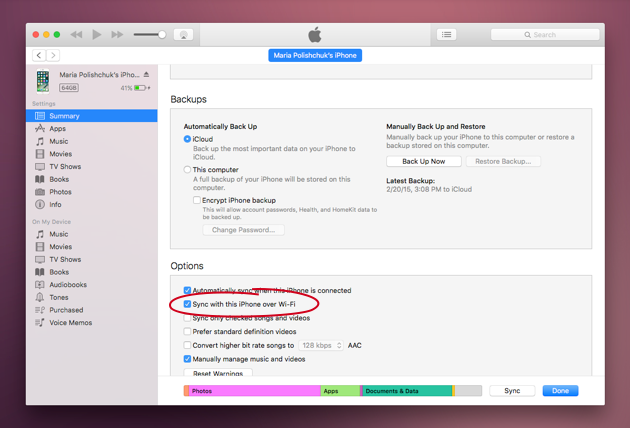Occasionally, you might come across errors with this sync process. When the sync issues occur, you can’t sync any of the files from your Mac to your Google Drive account. There are a few things you can do when Google Drive is not syncing on your Mac. These methods include restarting the sync process, disabling the proxy server, and so on. Sep 22, 2020 Multi Instance Sync. With the Multi-instance Sync, you can do even more in ODIN: Valhalla Rising. Sync the action of the main instance and repeat them in real time for all other instances. Sync and sit back, let the game progress unfold. In OS X, the Finder Sync extension point lets you cleanly and safely modify the Finder’s user interface to express file synchronization status and control. Unlike most extension points, Finder Sync does not add features to a host app. Instead, it lets you modify the behavior of the Finder itself.
Managing user access to Mac® laptops and desktops has historically been a challenge, particularly when using Microsoft® Active Directory® (AD) for identity and access management (IAM). The problem has been a constant issue for IT admins. Thankfully, from the cloud comes a new way to sync AD with macOS® systems.
Sync Or Swim Mac Os Catalina
The Active Directory Stronghold
Most organizations have centralized their IAM program around Microsoft Active Directory. Of course, AD was created in the era of on-prem, Windows®-based networks, so adapting it to modern environments has been a difficult process that is rife with growing pains.
Sync Or Swim Jamie
In general, many modern IT networks are heterogeneous with regard to systems, given the rise of macOS and Linux usage in the enterprise. Beyond that, recent explosions of cloud-based applications and infrastructure have put AD-centric organizations in a tough spot.
Historically, IT admins have leveraged on-prem directory extensions or identity bridges to sync AD with macOS systems. In recent days, mobile device management (MDM) tools have joined the mix to manage systems, tablets, and smartphones. These solutions were generally effective, but came with some drawbacks. For some, directory extensions presented a lot of work in terms of installing, implementing, and integrating them. The other challenge with these solutions is that they are generally expensive and ultimately further entrench an organization on-prem. In our increasingly cloud-forward era, this might not be the best strategy for IT admins looking to scale with efficiency.
Syncing AD with macOS from the Cloud
Now, IT admins are at a crossroads. It seems like IT admins have to choose between the lesser of two evils. One route is to continue using their directory extensions and deal with the overhead and budget involved with maintaining them. The other is to find an alternative to Active Directory and replace it altogether, which might involve tedious and potentially painful migration efforts.
The good news is that there is a third option: a cloud identity management solution that can extend Active Directory not only to Macs but also to Linux servers at AWS, G Suite, web applications, and much more. This AD Integration solution maximizes the value of AD on-prem by bridging it to a wide range of non-domain-bound IT resources, and is available as a part of JumpCloud® Directory-as-a-Service®.


Sync Or Swim Mac Os X
Active Directory Integration consists of two agent-based parts that are downloaded onto an AD domain controller. The first part, called AD Import, sources AD identities, passwords, and groups into JumpCloud, which then propagates them out to non-domain resources. These include macOS and Linux systems, as well as cloud-based apps and infrastructure. The second part, AD Sync, writes password changes made in these resources (i.e. macOS systems) through JumpCloud and back into Active Directory, creating a full, bi-directional sync between AD, macOS, and more.
With AD Integration, IT organizations can sync AD with macOS and other non-Windows / cloud resources without giving up any existing on-prem infrastructure, but also without purchasing and implementing a handful of point solutions.
Try AD Integration Free
If your organization needs to sync AD with macOS, you can try JumpCloud’s AD Integration absolutely free for your first 10 users and systems. Simply sign up for a JumpCloud account and start exploring AD Integration and Directory-as-a-Service for as long as you need.
You can schedule a live demo of AD Integration and Directory-as-a-Service for free as well. Contact us to learn more.